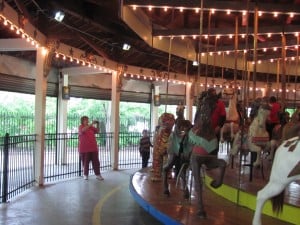
Memo to the Parks Department: You put the First Girlfriend of New York on crutches.
Diana Taylor, Mayor Bloomberg’s squeeze, suffered a broken ankle, courtesy of a pothole — in Central Park, according to the New York Post.
Taylor was hobbling through the Hudson River Park gala at Pier 26 Tuesday night sporting a fresh cast.
She told The Post she was walking her two yellow Labrador retrievers, Bonnie and Clyde, in the park not far from Hizzoner’s East 79th Street home.
“I’d love to tell you I did something really amazing,” she said. “But I was walking in the park not looking where I was going with our dogs in the morning, and I stepped in a pothole. And I broke my ankle.”
A pothole in a park?
Yes, Taylor tripped into a hole, underneath a tree, that had been dug up by one of the park’s resident animals, sources said.
The hole was filled — quickly — by park maintenance crews. That happens when your boyfriend has the big office at City Hall.
Taylor, who suffered the injury last week, took it in stride. At the gala she accessorized a summery sleeveless floral-print dress with a pair of gray crutches and a hearty smile.
“I’m great!” the former state superintendent of banks said as she stood at the fund-raiser for the beautification of Hudson River Park along the West Side Highway.
She co-hosted the gala, along with “CBS This Morning’s” Gayle King. The VIP guests included Christy Turlington Burns, Ed Burns and restaurateur Danny Meyer.
Later in the evening, Bloomberg joked about the mishap.
“I actually didn’t count on her stepping into a hole in Central Park and breaking her ankle . . . You have no idea how long it took her to climb up the steps at Madison Square Garden for our seats at the hockey game.”













